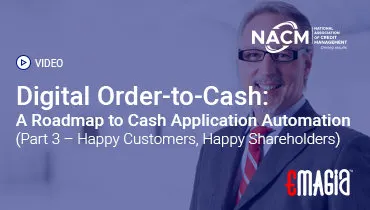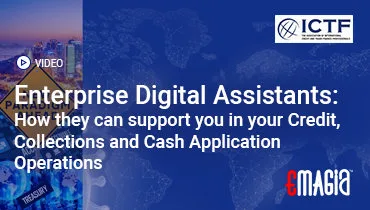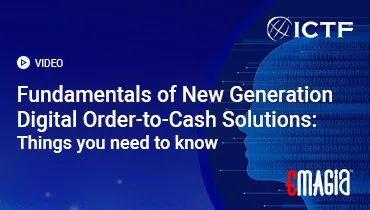Establishing the Core Value of Centralized Order-to-Cash Processes in Modern Finance
In the complex global economy, the movement of goods and services is only complete when the cash is successfully received. This lifecycle, known as Order-to-Cash (O2C), is the lifeblood of any commercial enterprise. It encompasses everything from receiving a customer’s order to the final reconciliation of the payment. Optimizing this chain is not merely an accounting function; it is a strategic imperative for cash flow, liquidity, and customer satisfaction.
Historically, the O2C function was fragmented, managed locally across different business units, regions, and countries. This decentralization led to massive inconsistencies, varying levels of compliance, bloated costs, and redundant efforts. The introduction of the Shared Service Center model—specifically for O2C—represents a fundamental architectural shift that consolidates these dispersed activities into a single, specialized, and highly efficient hub. These specialized centers are the engine room for financial stability, driving down Days Sales Outstanding (DSO) and radically improving the quality of financial data.
The Transformative Shift from Fragmented Operations to an Integrated Financial Hub
Moving from a decentralized model to an integrated financial hub involves more than just physically relocating staff. It requires standardizing processes, implementing unified technology platforms, and centralizing governance. This transition is challenging but offers exponential returns. It replaces regional silos with a cohesive, global best-practice approach, ensuring that every invoice is treated with the same level of rigor and efficiency, regardless of where the customer is located.
The primary benefit of this consolidation is the ability to leverage scale and specialization. By centralizing expertise, O2C Centers can invest in top-tier technology and deeply skilled personnel—investments that would be prohibitive for individual local finance teams. This pooling of resources is the initial catalyst for digital transformation, setting the stage for advanced automation and predictive analytics across the entire revenue cycle.
Architectural Blueprint: Structuring the Next-Generation O2C Global Business Services Hub
A high-performing O2C Center is not simply a centralized back office; it is a sophisticated operational structure built on four key architectural pillars: Process Standardization, Location Strategy, Talent Model, and Technology Alignment. Getting this blueprint right is crucial, as the structure determines the scalability and resilience of the entire revenue recovery function.
Defining the Scope and Service Catalog of the O2C Center
The initial and most critical step is defining the exact scope of services. A comprehensive O2C Center typically integrates multiple, formerly separate, processes:
Credit Management: Centralized risk assessment, customer onboarding, and credit limit setting. This ensures a consistent, corporate-wide credit policy, minimizing exposure to bad debt upfront.
Invoicing and Billing: Standardization of invoicing formats, distribution channels, and compliance checks. A single source for billing simplifies dispute resolution and accelerates cash flow.
Collections and Dunning: Global strategy for collections, automated outreach, and centralized collector worklists. This is where predictive analytics truly shines, allowing for targeted, personalized interventions.
Cash Application and Reconciliation: Automated matching of incoming payments to open invoices. This high-volume, repetitive task is ideal for automation, driving real-time ledger accuracy.
Deduction and Dispute Management: Centralized investigation and resolution of customer disputes (e.g., pricing, quality, short-shipments). This dedicated focus prevents small issues from escalating into major bad debt write-offs.
Strategic Location Models: Nearshore, Offshore, and Hybrid Execution
The choice of physical location profoundly impacts cost structure, talent acquisition, and service coverage. Companies must weigh the trade-offs between labor cost arbitrage and access to specialized financial skills.
Nearshore Centers: Located in adjacent time zones (e.g., Mexico for the U.S. or Poland for Western Europe). Offers better cultural fit, language proficiency, and closer management oversight, though typically at a higher labor cost than offshore models. They are ideal for complex, voice-intensive customer interactions.
Offshore Centers: Located in distant, low-cost economies (e.g., India, the Philippines). Provides significant cost savings and access to vast talent pools. Best suited for highly standardized, transactional processes like cash application and data entry.
Hybrid Models: The most common approach, utilizing a central “hub” (often nearshore or domestic) for strategy, governance, and complex decision-making, while leveraging an “spoke” (offshore) for transactional execution. This structure balances cost savings with strategic control.
Deep Dive into Critical Order-to-Cash Sub-Functions and Best Practices
Operational excellence in O2C Centers is measured by the flawless execution of each individual process step. This requires a granular focus on standardized workflows, exception handling protocols, and continuous process improvement methodologies like Six Sigma or Lean to eliminate waste and variability.
Transforming Credit Risk Management from Reactive to Predictive
Traditional credit management is often reactive, relying on historical data and manual review. Modern O2C Centers adopt a predictive approach, using data models to continuously monitor a customer’s financial health and payment behavior in real time. This involves integrating data from external credit agencies with internal sales and payment history.
The centralization allows for dynamic credit limits. Instead of a static annual review, the system automatically adjusts a customer’s available credit based on their recent purchasing patterns and payment scores. This agility helps sales teams capture opportunities quickly while ensuring financial exposure remains within acceptable corporate limits, balancing risk appetite and revenue growth.
Optimizing the Collections Strategy: Segmentation and Negotiation Excellence
The centralized collections team must move beyond generic dunning letters. Strategic collections rely on intelligent customer segmentation that prioritizes effort based on the likelihood of payment (propensity-to-pay), the value of the debt, and the strategic importance of the customer relationship.
For high-value, complex cases, the focus shifts to negotiation excellence. Centralized collectors become specialized consultants, trained in empathetic communication and structured negotiation techniques to maximize recovery while preserving the customer bond. For high-volume, low-value cases, the system relies almost entirely on automated, digitally-delivered outreach.
Mastering Cash Application and Reconciliation Through Unattended Processing
Cash application is a primary target for hyper-automation. The goal is unattended processing, where the system automatically receives electronic payment advice (EFT/ACH/wires), matches it to open receivables, and posts the payment to the ledger without human intervention. This requires advanced capabilities in recognizing various remittance formats, including lockbox files and and email attachments.
When exceptions occur—such as underpayments or unapplied cash—the system must automatically flag and route the issue to a specialized reconciliation team. This exception-based processing model ensures that 90% or more of payments are handled autonomously, allowing staff to focus only on complex mismatches, drastically improving the speed and accuracy of daily cash balances.
The Digital Revolution: Technology, Automation, and the Future O2C Center
The transition to a shared services model serves as a foundation for digital transformation. Without standardized processes, automation efforts fail. Modern O2C Centers are adopting a layered technology stack to achieve end-to-end digitalization, reducing manual effort and replacing human judgment in repetitive tasks with algorithmic precision.
The Essential Role of Enterprise Resource Planning (ERP) in Synchronization
The ERP (e.g., SAP S/4HANA, Oracle Fusion) remains the source of truth for financial data. The O2C Center’s performance is directly tied to the quality of its integration with the ERP. Seamless synchronization ensures that an order entered in the ERP instantly triggers the correct credit check, and a payment posted by the Center immediately updates the customer ledger, eliminating latency.
Centralizing O2C operations provides the impetus to rationalize multiple, disparate ERP instances into one global template. This standardization is the most challenging, yet highest-value, aspect of transformation, as it creates the clean, unified data required for advanced analytics and ML models.
Leveraging Robotic Process Automation (RPA) and Workflow Tools
RPA is the workhorse of transaction processing in an O2C Center. It is primarily used to automate high-volume, rules-based activities that involve interacting with multiple systems, such as pulling data from credit websites, uploading invoices to customer portals, and performing daily reconciliation checks.
Beyond simple bots, intelligent workflow orchestration tools manage the sequence of tasks, assigning items that require human judgment and passing fully automated items through quickly. This creates a smart, adaptive work environment where human and digital workers collaborate seamlessly, maximizing throughput and response time.
The Impact of AI and Machine Learning on Predictive Order-to-Cash
Artificial Intelligence transforms the O2C function from a reactive cost center into a proactive value generator. AI/ML models analyze vast amounts of data—both structured (payment history, invoice amount) and unstructured (email text, collector notes)—to generate actionable insights. These systems learn from past outcomes, constantly refining their predictions.
Key applications of AI include:
Predictive Collections: Automatically classifying customers based on their propensity to pay (e.g., high, medium, low risk) before the due date, allowing pre-delinquency interventions.
Intelligent Next-Best-Action: Recommending the optimal communication channel (email, call, SMS), timing, and message content for each customer, maximizing contact effectiveness.
Dispute Triage: Analyzing dispute reasons and historical resolution times to automatically assign the case to the most qualified agent, or even resolving simple disputes autonomously using contextual knowledge.
Governance, Risk Management, and Ensuring Global Compliance
The centralized nature of an O2C Center inherently raises the stakes for risk and governance. Managing collections and cash globally requires strict adherence to international accounting standards (IFRS, GAAP) and diverse local regulatory requirements. A strong governance framework is the foundation for the center’s integrity and longevity.
Standardizing Global Processes and the Role of the Process Owner
Process standardization is not a one-time activity; it is a continuous discipline. Every step, from order entry to final cash reconciliation, must be documented in a Global Process Model. A dedicated Global Process Owner (GPO), usually situated outside the Center but deeply engaged with its operations, is responsible for maintaining this model, ensuring consistency, and driving global best practice adoption.
The GPO acts as the bridge between corporate strategy and operational execution, preventing regional teams from reverting to old, non-standardized habits. They are the gatekeeper of efficiency, signing off on all process changes and technology enhancements across the O2C ecosystem.
Implementing a Robust Internal Control Framework for Financial Integrity
Centralization simplifies, but does not eliminate, the need for stringent internal controls. The center must implement controls that address segregation of duties, data access limitations, and financial reporting accuracy. This is critical for Sarbanes-Oxley (SOX) compliance in public companies.
Automated controls, such as system checks that prevent an agent from approving their own credit limit increase, are far more reliable than manual checks. The use of embedded audit trails within the O2C platform ensures that every transactional change is tracked, providing a transparent record for internal and external auditors, demonstrating financial responsibility.
Navigating Regulatory Diversity: GDPR, FDCPA, and Local Tax Laws
Managing collections across continents means facing a mosaic of regulatory requirements. A centralized system must dynamically apply the correct rules based on the customer’s jurisdiction. This compliance-by-design approach is a huge value proposition of the O2C Center model.
GDPR (General Data Protection Regulation): Affects how customer data is stored, processed, and destroyed. The system must support data minimization and the right to be forgotten.
FDCPA (Fair Debt Collection Practices Act): In the United States, this dictates rules on contact frequency, time-of-day restrictions, and required disclosures. The O2C platform must have built-in logic to ensure agents cannot violate these strict rules, preventing hefty fines and legal action.
Metrics and Performance: Measuring the Value of O2C Shared Services
The success of the O2C Center is not anecdotal; it is quantified by a set of well-defined Key Performance Indicators (KPIs) and Service Level Agreements (SLAs). These metrics provide the quantifiable evidence of the center’s efficiency, effectiveness, and contribution to corporate cash flow. Focusing solely on cost reduction is a mistake; the focus must be on value creation.
Core Financial Metrics: Days Sales Outstanding (DSO) and Bad Debt
DSO (Days Sales Outstanding): This is the primary metric for O2C efficiency. The center’s mission is to continuously reduce the time it takes to convert a sale into cash. A centralized, automated process directly impacts this by accelerating invoicing, streamlining collections, and posting cash faster.
Bad Debt Expense: This metric measures the percentage of receivables that are ultimately written off as uncollectible. Proactive credit management and intelligent collections are the two levers used by O2C Centers to drive this number down, preserving profit margins.
Operational Efficiency and Service Metrics
Cost-to-Collect: Measures the total operating cost of the O2C Center divided by the total value of collected revenue. Automation reduces this cost by replacing expensive manual effort with low-cost digital processing.
Dispute Resolution Cycle Time (DRCT): Measures the average time taken from when a dispute is logged to when it is fully resolved. A low DRCT is a strong indicator of an efficient dispute management process and high customer satisfaction.
Cash Application Straight Through Processing (STP) Rate: The percentage of payments that are automatically matched and posted without any human intervention. A high STP rate (often exceeding 90%) signifies mature automation in the cash process.
Stakeholder Satisfaction and Customer Experience
An often-overlooked metric is Customer Satisfaction (CSAT) within the collections process itself. While chasing debt is inherently difficult, a professional, consistent, and empathetic approach—enabled by accurate, unified data from the O2C Center—can significantly mitigate customer friction, protecting the long-term relationship.
Furthermore, internal stakeholder satisfaction, measured by how well the Center supports the Sales, Supply Chain, and Finance teams, is crucial. If the Center delivers timely and accurate reporting, internal trust and cooperation flourish, enhancing data-driven decision-making.
The Strategic Advantage of Implementing Digital O2C Transformation Platforms
For an Order-to-Cash Shared Service Center to operate at peak efficiency and scale, it requires a dedicated, purpose-built technology layer that sits above the foundational ERP. This platform is the difference between a simple cost center and a strategic profit enabler, driving value by providing foresight and frictionless customer experiences.
A leading solution in this space must provide several core capabilities to truly elevate the O2C process:
Unified Data Model: The platform must ingest and harmonize data from every source—ERP, CRM, external credit agencies, and communication channels—to create a single, real-time view of the customer’s account, payment status, and history.
AI-Powered Predictive Engine: The ability to move beyond historical reporting to predicting future cash flows and delinquency risks, guiding collectors to the most impactful accounts and actions.
Omnichannel Digital Engagement: Tools that allow the Center to communicate with debtors through their preferred channels (email, SMS, digital portal) with personalized, compliant messaging.
Advanced Cash Matching: Highly sophisticated algorithms that use machine learning to achieve near-perfect straight-through processing rates, handling complex deductions and unapplied cash with minimal human effort.
How Emagia Helps Revolutionize Order-to-Cash Centers with Generative AI and Automation
Emagia stands at the forefront of the autonomous finance movement, offering a specialized digital platform engineered to transform the traditional Order-to-Cash Shared Service Center into a high-efficiency, AI-powered Global Business Services (GBS) hub. Their unique value proposition lies in replacing rigid, rule-based automation with flexible, intelligent solutions powered by Generative AI and machine learning, yielding a demonstrable competitive advantage.
Emagia’s platform accelerates the cash cycle by automating the entire spectrum of O2C processes, from credit risk management to cash reconciliation. They move beyond simple RPA to implement cognitive automation, meaning the system doesn’t just execute predefined steps; it learns, adapts, and makes sophisticated, data-driven decisions that mimic and exceed human expertise. This intelligence results in a significant reduction in Days Sales Outstanding (DSO) and a measurable lowering of operational costs within the O2C Center.
The core innovation is their use of AI to drive frictionless customer engagement. The platform deploys intelligent digital assistants that can handle 80% or more of routine customer inquiries and payment promise negotiations via chat or email, 24/7. These assistants provide a seamless, personalized experience for the debtor, which increases payment compliance and protects valuable customer relationships, moving the collections effort from confrontational to collaborative and advisory.
Furthermore, Emagia’s advanced features, such as Deduction and Dispute Analytics, use machine learning to quickly identify the root cause of payment shortfalls, often automating the resolution process or providing collectors with the precise data needed to close the case quickly. This dedication to end-to-end digital mastery ensures that the GBS hub operates not just efficiently, but strategically, ensuring audit-ready compliance while maximizing cash recovery and accelerating the financial close process for global enterprises.
Frequently Asked Questions About Enterprise Debt Collection Technology and O2C Centers
What is the single biggest challenge in migrating to an Order-to-Cash Shared Service Center?
The single biggest challenge is typically data harmonization and master data management. When migrating from decentralized local systems, inconsistencies in customer records, pricing schemas, and chart of accounts often create chaos. Achieving a single, unified data definition across all regions and migrating this clean data is critical and requires significant upfront effort, but it is the prerequisite for successful automation and centralized governance.
How does an O2C Center ensure compliance with local country regulations while operating globally?
The center must deploy a centralized O2C technology platform with built-in, configurable compliance logic. This system uses the customer’s jurisdiction to dynamically apply relevant laws like the FDCPA in the U.S. or specific European data privacy rules, automatically limiting contact frequency or suppressing certain communication methods. This compliance-by-design approach removes the burden of tracking hundreds of local regulations from the individual collector.
What is the difference between RPA and AI in Order-to-Cash operations?
RPA (Robotic Process Automation) is rule-based and performs repetitive, high-volume tasks exactly as instructed (e.g., logging into a system and copying data). AI (Artificial Intelligence) is decision-based and performs cognitive tasks, learning from data to make predictions and judgments (e.g., predicting which customer is most likely to pay late or autonomously identifying the root cause of a payment deduction). AI drives the strategic decision-making, while RPA executes the transactional steps.
Is the primary goal of establishing an O2C Center cost reduction or process improvement?
While cost reduction (labor arbitrage) is often the initial driver, the long-term strategic goal is process improvement and value creation. Standardization, automation, and centralized expertise lead to far greater benefits than simple cost cutting, including reduced DSO, lower bad debt write-offs, improved data quality, and enhanced internal control—all of which contribute to a healthier balance sheet.
What skills are most important for collections specialists working in a centralized O2C environment?
Collections specialists in a modern O2C Center need to move away from clerical tasks and focus on complex negotiation, empathy, and technical proficiency. Critical skills include advanced communication and negotiation, problem-solving for complex disputes, financial analysis, and proficiency in using AI-driven worklist tools and digital customer portals.
Future-Proofing the Financial Enterprise with a Global Order-to-Cash Shared Services Strategy
The establishment of a sophisticated Order-to-Cash Shared Service Center represents the pinnacle of modern financial operations strategy. It is not a temporary trend but a necessary evolution driven by the demands of global scale, regulatory complexity, and the imperative for real-time cash flow visibility. By consolidating dispersed O2C activities, businesses unlock exponential gains in efficiency and control, transforming the revenue cycle into a predictive, agile, and transparent system.
The successful O2C Center leverages digital tools—from RPA for transactional speed to Generative AI for strategic foresight—to accelerate cash conversion and minimize risk. The future lies in achieving autonomous O2C, where human intervention is only required for high-value negotiations and complex exceptions. Companies that make this strategic shift today are not just reducing costs; they are building the resilient financial architecture necessary to thrive in the decades to come, safeguarding liquidity and fueling sustainable growth.



